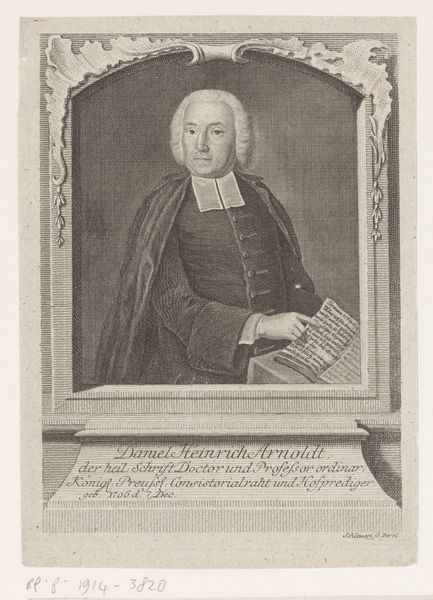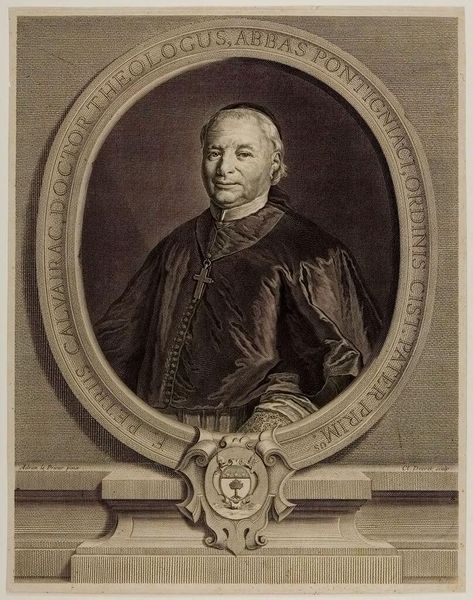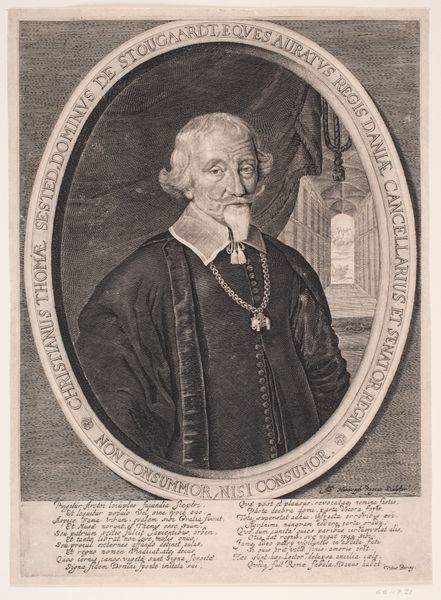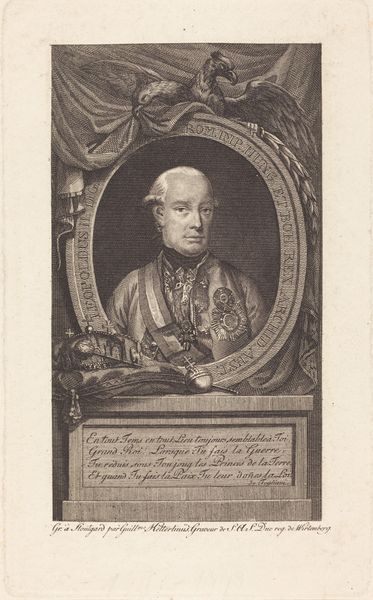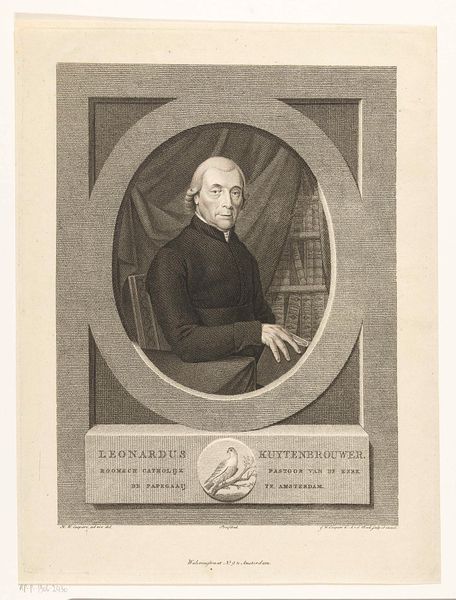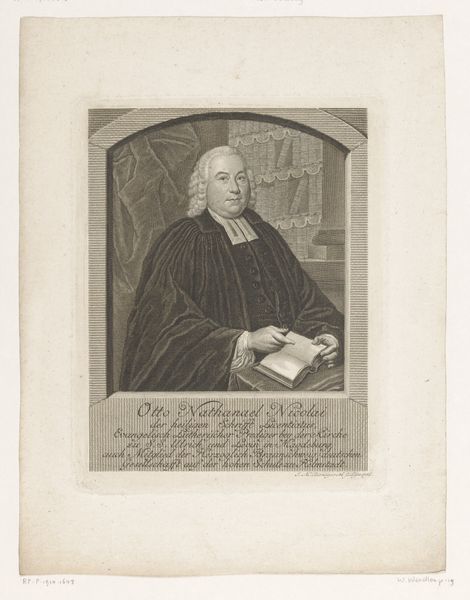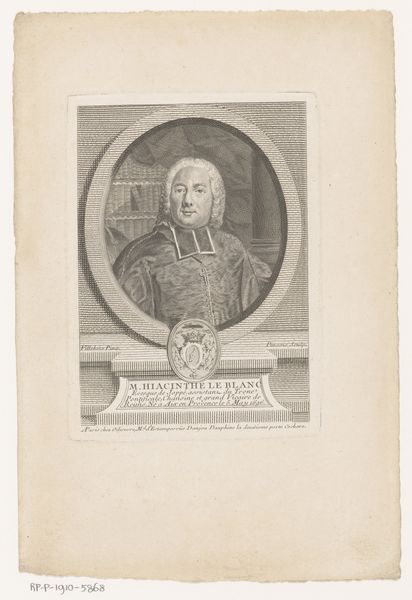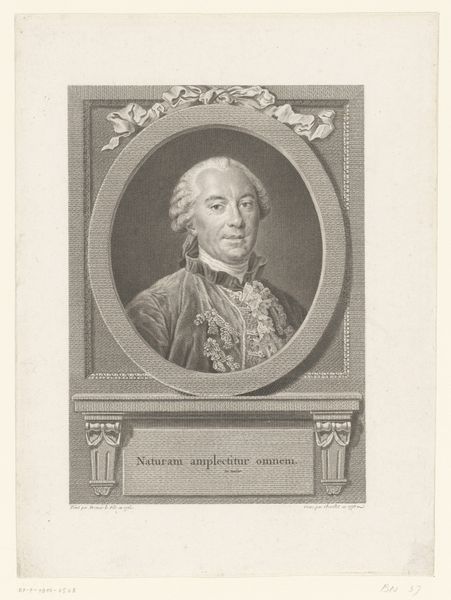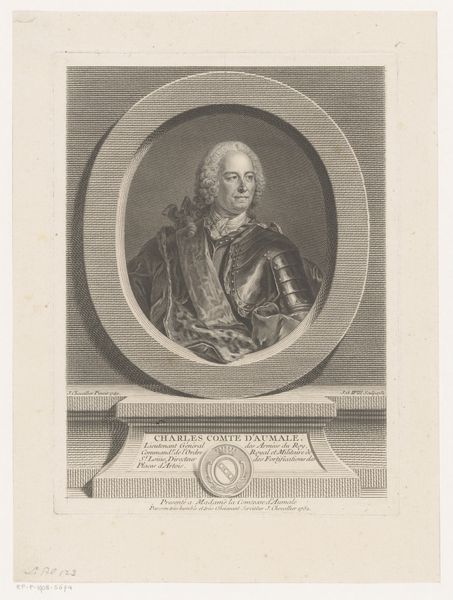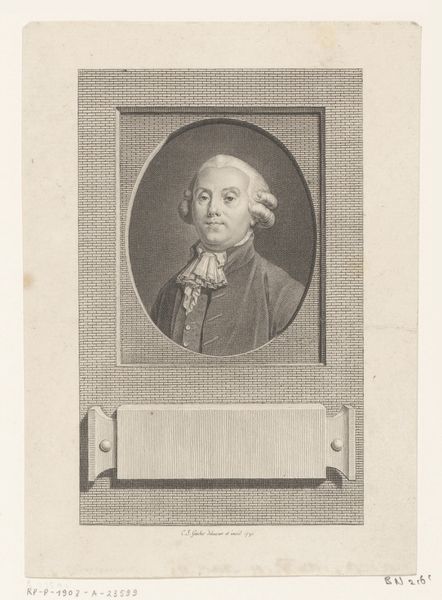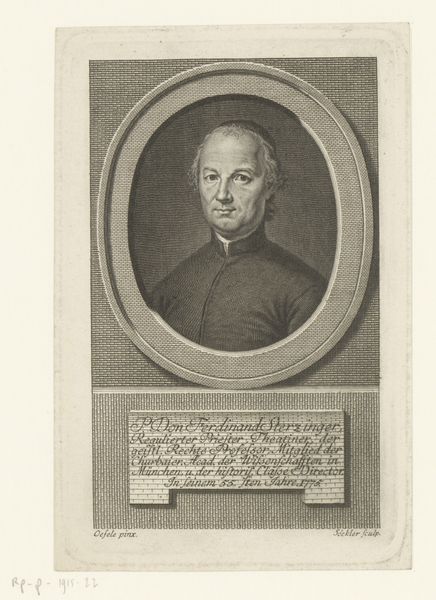
engraving
#
portrait
#
baroque
#
old engraving style
#
portrait reference
#
19th century
#
history-painting
#
engraving
Dimensions: height 433 mm, width 337 mm
Copyright: Rijks Museum: Open Domain
Curator: Today we are looking at Claude Drevet's engraving "Portret van Pierre Calvairac" dating back to sometime between 1719 and 1781. It is currently held in the collection of the Rijksmuseum. Editor: Ah, yes. The Abbé! What strikes me immediately is this incredible stillness—almost a meditative quality to the man's face. And the oval frame, adorned with text... it all feels very Baroque, but also rather solemn, no? Curator: I think solemn is the perfect word. Looking at the engraving itself, what impresses me most is the sheer craft. Drevet’s handling of line is so incredibly controlled, you can almost feel the burin working across the copper plate. You have to remember that everything you see, from the light catching on his vestments to the folds of his robe, is painstakingly rendered by hand. No room for error. Editor: Exactly! And the way the different densities of line create this tonal range…the illusion of velvety texture is remarkable. It speaks volumes about the labour invested, and of course, who would commission or purchase such a piece. Were prints such as this one destined for wider circulation, do you think? Curator: Precisely. These prints served a dual purpose, right? A means of commemorating an important figure, yes, but they are also examples of highly refined skills passed down through generations of artisans and, given that engravings can produce many copies, they allowed these images, and ideas, to disseminate much further than paintings could. This was about access as much as aesthetics. Editor: Thinking about access reminds me...I'm wondering about the sitter's attire, those robes he wears. I bet the tailoring involved a specific weave that can trap light to produce that almost glistening velvet feel in Drevet’s image. How reliant was the artistic rendering on what textile workers produced at the time? Curator: You've made me think… it also touches on the complex relationship between artistic skill and commercial structures. In many ways, an engraving like this—however masterful—relied on other skills for its communicative power, didn't it? Editor: In a nutshell! Each profession illuminates the other...So, ultimately, in a work such as this, we observe the subject as much as the process. Curator: Beautifully put. Let’s leave our listeners with that thought, then.
Comments
No comments
Be the first to comment and join the conversation on the ultimate creative platform.

